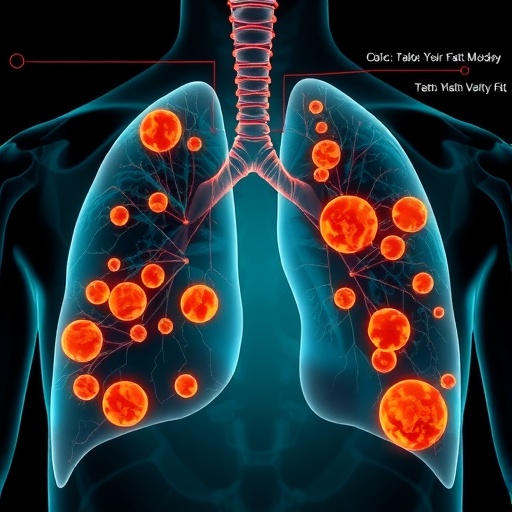
In an increasingly interconnected world, the exploration of intergenerational relationships has become an area of significant interest, particularly as life expectancy continues to rise. In 2025, Fitzpatrick and OâNeill presented a groundbreaking study titled “Closer than ever before: insights into parallel ageing of older people and their even older parents from the cinematic genius of No Home Movie,” which delves into the nuances of aging within families. This compelling research seeks to unravel the intricate dynamics that arise as older adults navigate their later years alongside their aging parents. Through the lens of cinema, particularly the work of filmmaker Chantal Akerman, the study offers insightful observations that resonate deeply with contemporary societal trends.
The significance of aging is magnified by the realities of modern society, where more people are living into their 80s and beyond. This demographic shift presents unique challenges not only for the individuals involved but also for families tasked with supporting older generations. The intricate web of relationships unfolds as older adults grapple with their health and cognitive decline while simultaneously caring for even older parents. Fitzpatrick and OâNeillâs exploration emphasizes the emotional and practical implications that this parallel aging presents.
Fitzpatrick and OâNeill’s study highlights the impact of societal expectations on how aging is perceived and experienced within families. While individuals might expect to experience a certain degree of independence as they age, the reality often entails a flip in the caregiver dynamic. As health issues begin to creep in for older adults, the need to rely on their parents for support becomes a source of tension and reflection. The researchers draw from cinematic moments that encapsulate these feelings, emphasizing the power of storytelling in understanding complex emotional landscapes.
One of the core themes that emerge from their analysis is the concept of memory and its role in the experience of aging. The filmmakers whose works they analyze weave narratives that capture not only the individual stories of characters but also the collective memories that families share. This notion is particularly poignant in the context of Akerman’s “No Home Movie,” which serves as a compelling case study. The film explores the intricacies of maternal relationships, evoking emotions that echo through generations. Fitzpatrick and OâNeill argue that such cinematic portrayals resonate deeply with viewers, providing a reflective space to consider the complexities of their own family dynamics.
The researchers also delve into the emotional toll that aging can take on families, employing qualitative research methods to gather personal stories and insights. They argue that sharing experiencesâwhether through film or personal narrativesâcan foster deeper connections among family members. This suggests that communication and openness are vital as families navigate the challenges of aging together. For many, the act of discussing aging openly can alleviate some of the fear and loneliness that comes with it.
Moreover, Fitzpatrick and OâNeill draw attention to the role of caregiving in reinforcing relationships within families. The act of caring for aging parents can bring families closer together, forging bonds as they work collaboratively to support one another. However, this caregiving dynamic is not without its challenges. The burden of caregiving can lead to stress and resentment if not managed effectively. The study calls for increased awareness of caregiver needs and the importance of establishing support systems to help mitigate these challenges.
In addition, the authors reflect on cultural perceptions of aging and how they can influence family dynamics. In many cultures, aging is associated with wisdom and respect; however, in others, it is often perceived through a lens of loss and decline. Fitzpatrick and OâNeill emphasize the need for a more nuanced understanding of aging that transcends ageist stereotypes and highlights the multifaceted nature of growing older. By looking beyond traditional narratives, families can begin to redefine their relationships and expectations surrounding aging.
Technological advancements play a pivotal role in shaping the experience of aging in the modern world. The study discusses how digital communication tools can facilitate connections between family members, regardless of geographic distance. These tools enable older adults to maintain relationships with their children and grandchildren, bridging the gap that physical distance can create. However, the researchers caution that reliance on technology should not replace face-to-face interactions, which remain essential for emotional support and connection.
As the number of older adults continues to rise, the need for policy interventions that support intergenerational relationships becomes increasingly pressing. Fitzpatrick and OâNeill advocate for a more comprehensive approach to policies affecting aging individuals and their families. This includes access to mental health resources, caregiving support, and community programs that encourage social interaction. By addressing these gaps, societies can create environments that foster healthy aging and strengthen family connections.
In conclusion, Fitzpatrick and OâNeillâs research sheds light on the evolving nature of aging within families, offering valuable insights informed by cinematic analysis. Their work encourages a broader conversation about the experience of aging, moving beyond traditional narratives to explore the rich tapestry of intergenerational relationships. It is clear that as society continues to grapple with the realities of an aging population, understanding the dynamics of these relationships will be crucial in fostering supportive and nurturing environments for all family members.
As this landscape evolves, it calls for a collective effort to redefine how we approach aging, care, and relationships. The insights gleaned from both personal narratives and cinematic portrayals not only enrich our understanding of aging but also create pathways for greater empathy and connection among families. The implications of this study are profound, urging us to reconsider our perceptions of aging while highlighting the importance of familial bonds in navigating this inevitable life transition.
Subject of Research: Parallel aging of older people and their even older parents.
Article Title: Closer than ever before: insights into parallel ageing of older people and their even older parents from the cinematic genius of no home movie.
Article References:
Fitzpatrick, N., OâNeill, D. Closer than ever before: insights into parallel ageing of older people and their even older parents from the cinematic genius of no home movie.
Eur Geriatr Med (2025). https://doi.org/10.1007/s41999-025-01291-z
Image Credits: AI Generated
DOI: https://doi.org/10.1007/s41999-025-01291-z
Keywords: Aging, Intergenerational Relationships, Caregiving, Cinematic Analysis, Family Dynamics.
Tags: caregiving for older adultschallenges of aging parentsChantal Akerman’s cinematic influencedemographic shifts in life expectancyemotional implications of aginghealth decline in older generationsinsights from No Home Movieintergenerational relationshipsparallel ageing in familiesrelationships across generationssocietal trends in agingsupporting elderly family members




